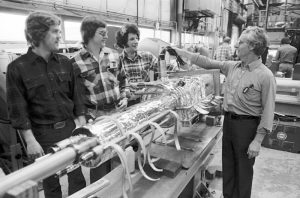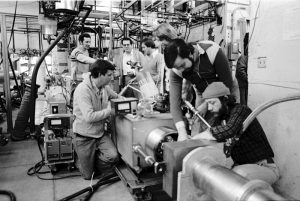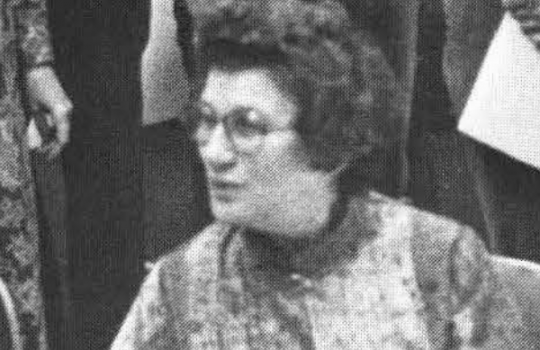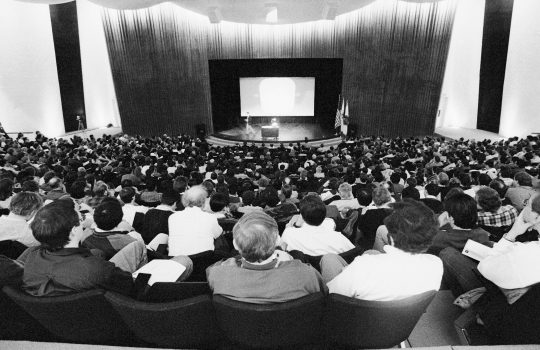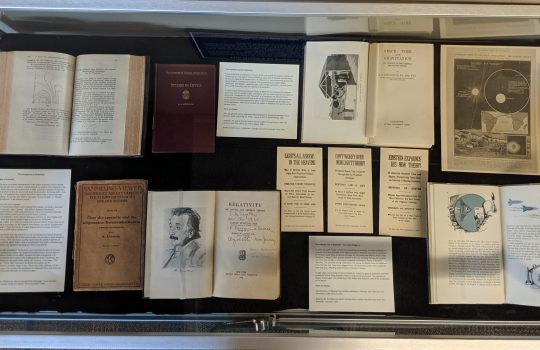When I started at the lab in December 1977, work on the dipole magnets for the Tevatron was well under way in what was then called the Energy Doubler Department in the Technical Services Section.
My first project was to work on the quadrupole magnets and spools, which hadn’t really been started yet. The spool is a special unit that attaches to each quadrupole and the adjacent dipole. It contains what we used to call “the stuff that wouldn’t fit anywhere else” – correction magnets and their power leads, quench stoppers to dump the energy from all the magnets, beam position monitors, relief valves, things like that.
At the time, we were located in the Village in the old director’s complex, which now houses the daycare center. We had a large open area where the engineers, designers and drafters worked and a small conference room where we kept up-to-date models of some of the things we were working on.
For several weeks we worked feverishly on the design of the quadrupole and spool combination — we in the design room and the model makers in the model shop on their full-scale models. We would work all week, then have a meeting with the lab director, Bob Wilson. Dr. Wilson would come out to see how we were doing, but more importantly to see what our designs looked like.
It turns out he was very interested in that and very fussy that things — even those buried in the tunnel — looked just so.
After every one of those meetings we’d walk back into the design room and tell everyone to tear up what we’d been working on and start over. The same would hold for the model makers. This went on for several weeks until Dr. Wilson was happy. We began to really dread going into those meetings, but in the end they served us very well.
Tom Nicol is a mechanical engineer at Fermilab.

